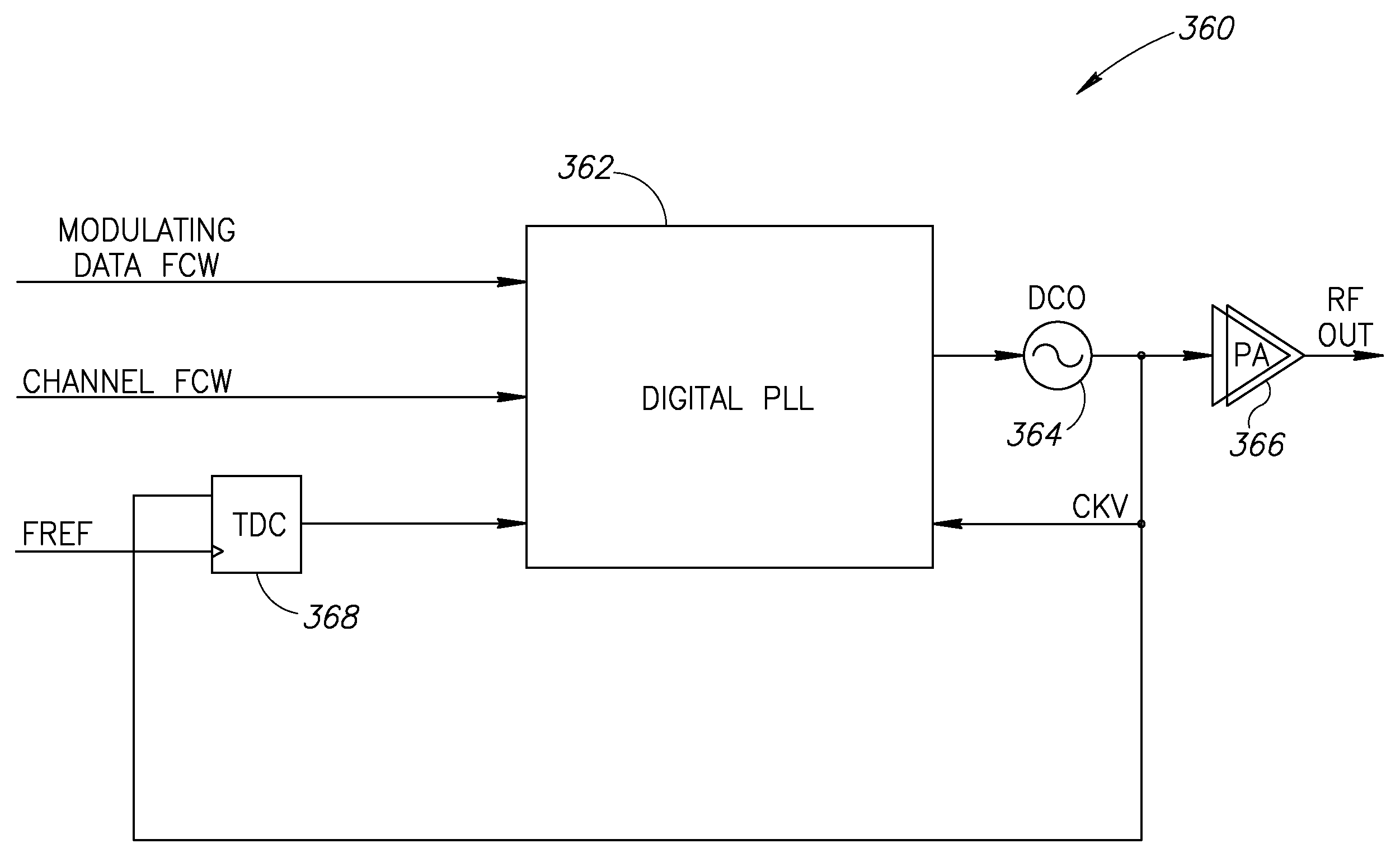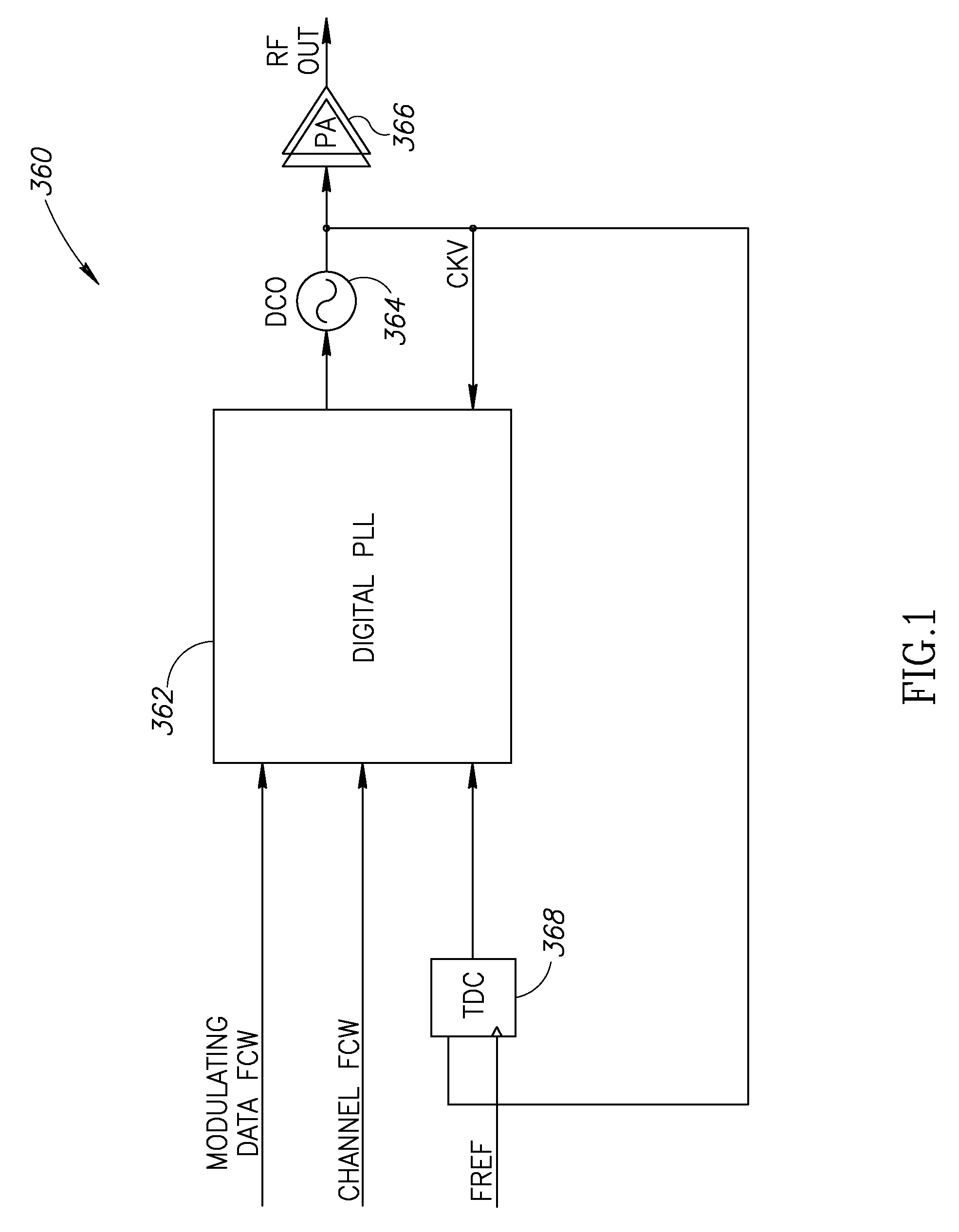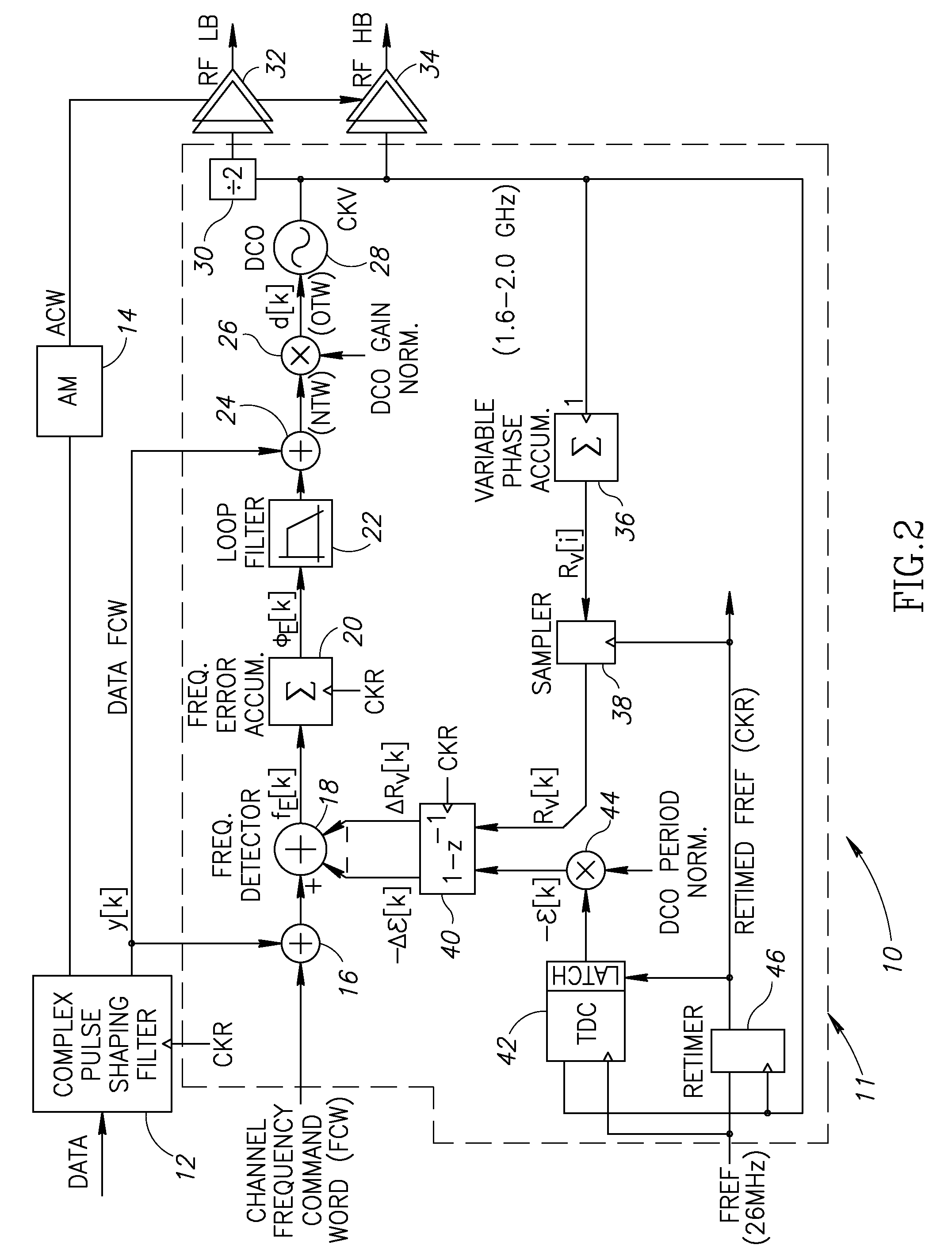Adaptive spectral noise shaping to improve time to digital converter quantization resolution using dithering
a technology of dithering and spectral noise, applied in the field of data communication, can solve the problems of quantization noise, peculiar behavior of tdc, and undesirable effects of quantization noise, and achieve the effect of improving the resolution of a time to digital converter
- Summary
- Abstract
- Description
- Claims
- Application Information
AI Technical Summary
Benefits of technology
Problems solved by technology
Method used
Image
Examples
case 1
MHz without Modulation (Integer Channel)
[0143]A graph illustrating the improvement of the ADPLL output phase error using the mechanism of the invention in the case of an integer channel is shown in FIG. 23. This figure shows the phase noise improvement due to the TDC resolution improvement algorithm. The large uncorrected DCO phase drift (dashed curve) is due to TDC quantization noise. The algorithm induces the phase noise of the CKV clock at the edges of the inverter delay interval thereby increasing the overall TDC resolution, as shown in the solid curve.
[0144]A graph illustrating the spectrum of the TDC quantization noise for the integer channel case is shown in FIG. 24. This figure shows the spectrum of the TDC quantization noise without (dashed curve) and with (solid curve) resolution improvement. In this example, the TDC resolution improvement algorithm significantly shapes the quantization noise energy and thereby the integrated phase noise within the PLL loop bandwidth (˜30 ...
case 2
Hz without Modulation (Non-Integer Channel)
[0145]A graph illustrating the improvement of the ADPLL output phase error using the mechanism of the invention in the case of a non-integer channel is shown in FIG. 25. In this example, a fractional channel is chosen to demonstrate the benefit of the TDC resolution improvement algorithm. It demonstrates that the algorithm shows a steady ˜0.2 degree RMS phase error. This is an improvement from 1.6 degree RMS phase error.
[0146]A graph illustrating the spectrum of the TDC quantization noise for the non-integer channel case is shown in FIG. 26. In this figure, the spectrum without the benefit of the TDC resolution improvement is shown in the dashed curve, while the spectrum with the TDC resolution improvement is shown in the solid curve. The noise shaping performed in this case also improves the overall RMS phase error.
PUM
 Login to View More
Login to View More Abstract
Description
Claims
Application Information
 Login to View More
Login to View More - R&D
- Intellectual Property
- Life Sciences
- Materials
- Tech Scout
- Unparalleled Data Quality
- Higher Quality Content
- 60% Fewer Hallucinations
Browse by: Latest US Patents, China's latest patents, Technical Efficacy Thesaurus, Application Domain, Technology Topic, Popular Technical Reports.
© 2025 PatSnap. All rights reserved.Legal|Privacy policy|Modern Slavery Act Transparency Statement|Sitemap|About US| Contact US: help@patsnap.com



